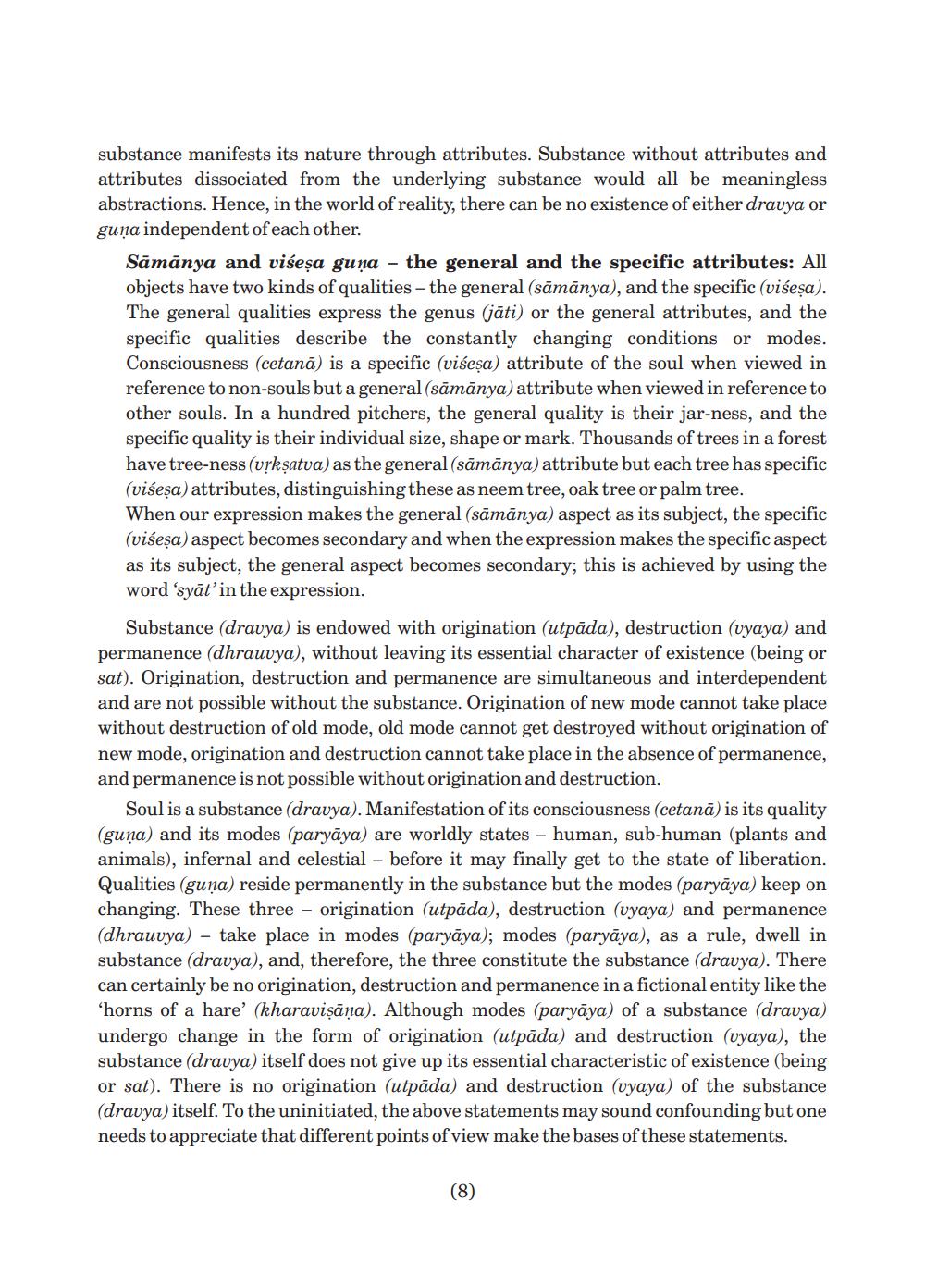________________
substance manifests its nature through attributes. Substance without attributes and attributes dissociated from the underlying substance would all be meaningless abstractions. Hence, in the world of reality, there can be no existence of either dravya or guņa independent of each other.
Sāmānya and višeşa guna - the general and the specific attributes: All objects have two kinds of qualities - the general (sāmānya), and the specific (višeşa). The general qualities express the genus (jāti) or the general attributes, and the specific qualities describe the constantly changing conditions or modes. Consciousness (cetanā) is a specific (vićeşa) attribute of the soul when viewed in reference to non-souls but a general (sāmānya) attribute when viewed in reference to other souls. In a hundred pitchers, the general quality is their jar-ness, and the specific quality is their individual size, shape or mark. Thousands of trees in a forest have tree-ness (urksatva) as the general (sāmānya) attribute but each tree has specific (visesa) attributes, distinguishing these as neem tree, oak tree or palm tree. When our expression makes the general (sāmānya) aspect as its subject, the specific (visesa) aspect becomes secondary and when the expression makes the specific aspect as its subject, the general aspect becomes secondary; this is achieved by using the word 'syāt' in the expression.
Substance (dravya) is endowed with origination (utpada), destruction (uyaya) and permanence (dhrauvya), without leaving its essential character of existence (being or sat). Origination, destruction and permanence are simultaneous and interdependent and are not possible without the substance. Origination of new mode cannot take place without destruction of old mode, old mode cannot get destroyed without origination of new mode, origination and destruction cannot take place in the absence of permanence, and permanence is not possible without origination and destruction.
Soul is a substance (dravya). Manifestation of its consciousness (cetanā) is its quality (guņa) and its modes (paryāya) are worldly states - human, sub-human (plants and animals), infernal and celestial - before it may finally get to the state of liberation. Qualities (guna) reside permanently in the substance but the modes (paryāya) keep on changing. These three - origination (utpada), destruction (vyaya) and permanence (dhrauvya) - take place in modes (paryāya); modes (paryāya), as a rule, dwell in substance (dravya), and, therefore, the three constitute the substance (dravya). There can certainly be no origination, destruction and permanence in a fictional entity like the ‘horns of a hare' (kharavisāna). Although modes (paryāya) of a substance (dravya) undergo change in the form of origination (utpăda) and destruction (vyaya), the substance (dravya) itself does not give up its essential characteristic of existence (being or sat). There is no origination (utpāda) and destruction (vyaya) of the substance (dravya) itself. To the uninitiated, the above statements may sound confounding but one needs to appreciate that different points of view make the bases of these statements.
(8)




